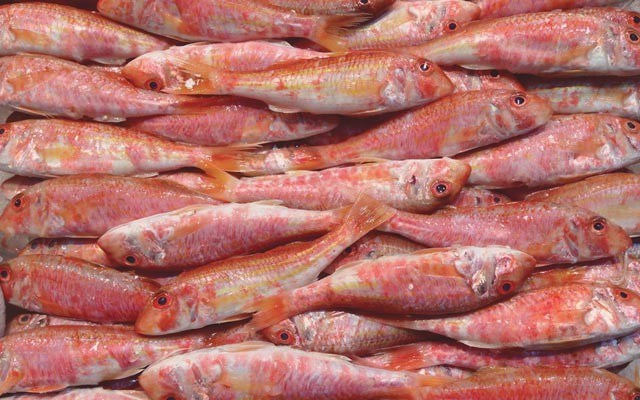You know a place has a lot of history when its citizens argue about whether to preserve its Roman ruins.
"They were going to build the law courts here and that's the only reason they found them," explains my guide Athena Tsakiri as we explore the old Roman forum in Thessaloniki, the second largest city in Greece. "The only thing missing is the temple, and it's under apartment buildings," she adds.
There aren't just Roman ruins, but Christian churches from the 6th century, Byzantine baths from the 13th and 14th centuries, Turkish hamams and mosques from the 15th century. The White Tower on the waterfront — originally a fortress and prison, and today the symbol of the city — also hails from the 15th century when Turks from the Ottoman Empire held sway.
Conquering powers influenced the city's culture hugely, but so too did refugees fleeing persecution elsewhere. During the Spanish Inquisition, for instance, 15,000 to 20,000 Sephardic Jews settled in Thessaloniki, giving rise to the city's nickname Mother of Israel.
Today, that tumultuous history has produced a rich cuisine. Thessaloniki has become known as a culinary destination, perhaps even the culinary capital of Greece because of its huge variety of ingredients and cooking traditions.
"It's fantastic," says, chef Despina Karagiozi, who runs the Marmita Cooking School and Eat and Walk Tours. "The Jews brought parsley, beans, walnuts and dried fruits. Slavs brought paprika, pickles, and cabbage. People from Asia Minor brought eggplant, pine nuts and the practice of stuffing peppers. I was in Israel last year and had eggs poached in tomato sauce. We do the same."
After sampling a typical northern Greek breakfast of savoury cheese and cream pies made with flaky filo pastry we head to Modiano market, the centre point of the city's food market with Esmeralda Makris, also a chef and co-owner of Eat and Walk Tours.
Tables are heaped with freshly picked produce. Enormous sacks of dried herbs are filled to overflowing, while smaller bags contain an array of pulses and nuts in their shells. Butchers and bakers are here too, but it's the seafood section that's the most eye-catching.
Some of the fishmongers line up their catches in tidy blocks and orderly rows, creating the impression of a seafood quilt. Prawns snuggle side by side next to a lumpy pile of purple octopus. Bright silver anchovies look almost metallic. The variety and abundance seem to contradict what we hear about the oceans being depleted.
We stop at a deli for an instructive introduction to Greek cheese. Most of us are familiar with a type of feta; the crumbly white cheese packed in tubs of brine. But here there are many kinds of feta. "Each region has its own flavour," says Makris, but they're similar in that they all are made with at least 70 per cent sheep's milk.
"We eat a lot of cheese," admits Makris. "About 25 kilos per person per year." She tells us the first written reference to feta was in Homer's epic story, The Odyssey, which means Greeks have been making and eating it for more than 3,000 years. Besides feta, numerous other cheeses are unique to Greece, including a delicious smoked yellow cheese called metsovone.
That other Greek staple — the olive — also comes in more varieties than we find in supermarkets at home. The specialty of Halkidiki, a region near Thessaloniki, is lemon-flavoured olives, while those from an island in northern Greece are smashed to achieve a wrinkly texture.
Next, we visit a shop with rows of bright blue crock-pots. Lift the lids and inside each one is a different kind of fruit soaking in sweetened water. "It was tradition to give a spoonful of fruit cooked in syrup to guests when they arrived at your house" explains Makris.
Discovering how chefs in Thessaloniki prepare these and other local ingredients is one tasty adventure that can keep you exploring here for days. At Ergon, a restaurant begun by two brothers a few years ago, we enjoy salmon with smoked eggplant puree and caramelized leeks; orzo pasta with pulled lamb; sundried tomatoes with hard cheese; and a dessert of chocolate cheesecake with chestnut puree. (Ergon has been so successful it now has eight restaurants in Greece and two outside the country; one in London and one in Brussels.)
But my most memorable meal was also one of the simplest. For lunch one day on the sunny terrace at Ouzo On The Blackboard we order platters of grilled octopus and prawns swimming in olive oil, steamed mussels, grilled metsovone cheese, roasted red peppers and a Greek salad topped with large triangles of herbed feta cheese. Washed down with locally made Alpha beer, it was a meal to savour long after it was over.
If you go:
Fly: Aegean Airlines flies from numerous European cities to Athens and from there to Thessaloniki. It was named Best Regional Airline in Europe in 2014.
Stay: Hotel Luxembourg is a block from the waterfront and close to shops and cafes. Request a room at the back, away from noisy cafes out front.
Eat: Ergon, a local Greek chain owned by two brothers. Their restaurant (and shop selling Greek products) in Thessaloniki was their first. Ouzo on The Blackboard is very popular with a large outdoor terrace and extensive menu. Ouzou Melathron (Ouzo Palace) is another local favourite with an outdoor patio and regional specialities such as feta baked with tomato.
Tours: Eat and Walk Tours, run by two local chefs, will introduce you to the flavours of Thessaloniki and/or show you how to cook like a Greek grandmother. Athena Tsakiri is a local guide who knows everything there is to know about the history and culture of Thessaloniki and Greece. She offers individual and group tours.




